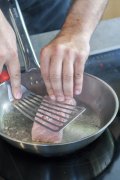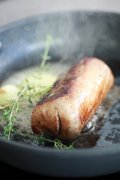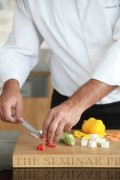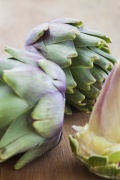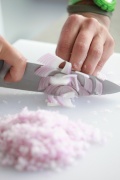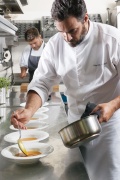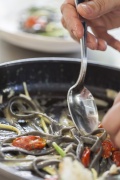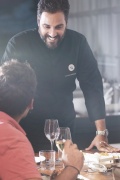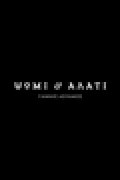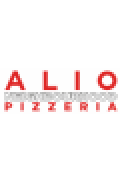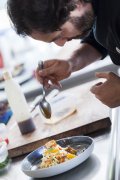 TIPS
TIPS
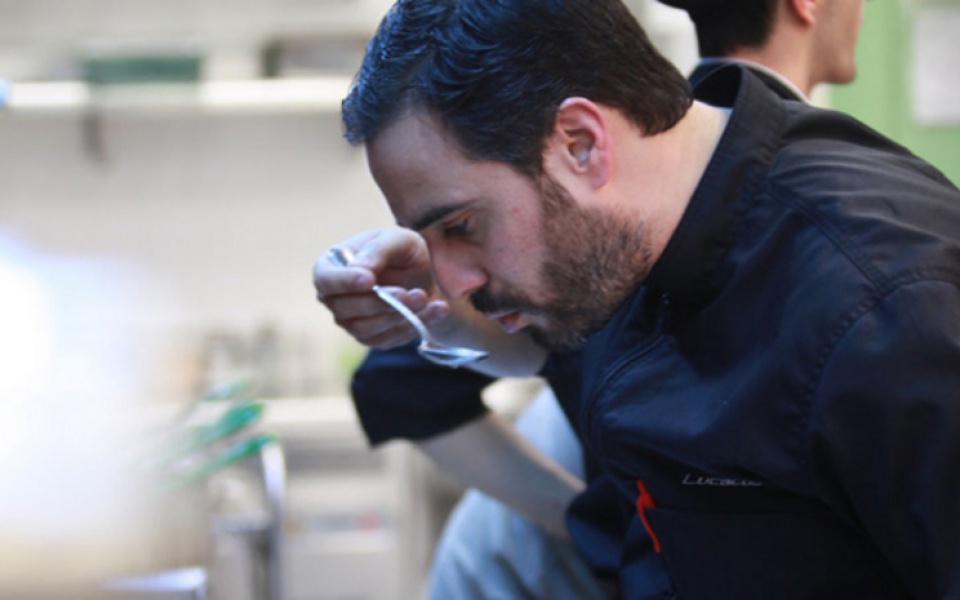
This website was initially set up in November 2011. It soon, however, became clear that it had to be renewed and developed to its current, more comprehensive format in order to cover the needs and interests of all of you who love cooking and need a good electronic cooking guide.
The idea already existed: I envisaged a website that, apart from publishing various recipes, would offer me the opportunity to share my knowledge and experiences as a chef easily, quickly and for free to all interested parties. The motivation for the realization of this vision came from all of you. Your love of cooking, your appreciation of my work, your interest, comments and suggestions led to this. With a lot of drive and hard work, I created a contemporary, comprehensive and precise cooking guide for all; exactly what you all asked for. Its primary aim is to have practical application in the kitchen and contain all the necessary information that will nurture and promote your interest in cooking.
Of course, this website also contains additional material more generally related to my work. One can find information concerning me and my professional activities (e.g., my resume, my books, the restaurant of which I am chef and co-owner, various news items and announcements related to my work) as well as extensive material from interviews in the media and various television appearances.
It is a comprehensive website with varied content always, however, related to my work: cooking. It has been set-up and operates around this main theme because it is addressed to all of you who share my love for this work. The focal points of its content are the “Recipes” and the “Cooking Guide,” the two main culinary sections. These allow me to share my cooking experiences with all of you, in a simple and understandable way.
This text explains how I envisaged and structured this website so that it could become a comprehensive and precise cooking guide. I hope that these pages will cover all your needs and questions; that you will find recipes for all occasions and all tastes and that you will discover new and interesting cooking skills and techniques. By selecting corresponding links from the menu, i.e.: “Recipes” and “Cooking Guide,” you will find extensive relevant content: the first contains a collection of my own recipes and the second instructions and tips on all culinary practices.
Every section contains further information on the philosophy behind each thematic classification.
The Cooking Guide and its philosophy
This section is exactly what its name suggests: a contemporary, comprehensive and precise cooking guide.
The know-how and information it contains are structured and organized in 6 sub-sections. Each one represents a different way of transmitting knowledge but they are all characterized by absolute clarity.
The guide contains the following:
Tips
Hints relating to all aspects of the cooking process from kitchen preparation to storing cooked food. It covers the needs of those of you who want a “quick” summary of a culinary theme or small process.
Q & A
This section seeks to answer the most common questions and queries of those interested in cooking, whether they are novices or more advanced. You will surely discover very useful information here. Since it is impossible for me to anticipate everything you may want to learn, I have ensured you have the possibility to submit your own cooking question for me to answer. Find out how on the relevant page.
How to
This is the guide’s most “practical” section. With the help of relevant photographic or video instructions, it explains basic cooking techniques and processes. It is aimed at cooks of all levels, including absolute beginners. Assisted by the “How to” section you can develop new skills and improve existing ones.
Lessons
This sub-section is particularly relevant to those who want to enrich their theoretical knowledge of cooking. It contains short cooking lessons formulated in a way that is simple and easy to understand. The principle for the selection of the subjects was their applicability. The theoretical knowledge I wish to impart is knowledge with a practical application in a cook’s everyday involvement with cooking; not just theory for theory’ sake. These lessons are here to augment your culinary perception and help you develop a broader understanding of the best choices related to your ingredients and techniques. The “Lessons” content – with its more technical/theoretical subjects – will, I believe, be of particular interest to those who wish not only to implement a process in the kitchen but also to be able to explain it by learning a little more about it.
Ingredients
When discovering new recipes it is likely that you will come across new ingredients you did not know about. A comprehensive ingredients list could not be missing from the Cooking Guide. For greater usefulness and optimal instruction I thought it necessary to offer information regarding origin, characteristics, storage and seasonality to the description of each ingredient.
Terms
Every day we encounter various cooking terms and often we don’t know what they mean. For example, how many people know exactly what a ganache, a carpaccio or a béarnaise sauce is or what blanching really means in a recipe? Also, as you enrich your cooking knowledge you will keep coming across new terms and you will often wonder what they mean. In this section you will find the answer to all these queries. You will also be pleasantly surprised to discover that the terminology relates to cooking and gastronomy in the broadest possible sense.
The Recipes and their philosophy
I believe it is fitting to share with you a few words related to my philosophy on cooking and offer you some useful information on the way the recipes on this website function.
I always believed that technique is the most import thing in cooking. Correct technical training and perception can help you go a long way. To gain it, we must focus on it and not on recipes. Recipes should be viewed as guides which provide us with a general direction. This is one of the first important lessons I learnt at cooking school and which I am trying to convey with ardent zeal because through my contact with people who love to cook I perceive a serious adherence to recipes.
My advice is that this adherence should be replaced by the development of the use of our senses. Use your senses while you’re cooking in order to understand what is happening. They are all useful: both the obvious, taste, smell and vision and the less obvious, hearing and touch. These are your true guides since they are objective tools of evaluation and you must trust them.
The recipes presented on this web site are divided into a number of basic categories, e.g., Sauces, Desserts, Appetizers, Soups, etc., so as to be easy to use. In the “Basic Recipes” category you will find the main, general use recipes such as sauces, stocks, etc., that I use quite regularly in my cooking. You will often find them mentioned in other recipes as “sub recipes” under the relevant sub-heading.
Most recipes are fairly simple, for everyday use, while others are more sophisticated. They are structured in a simple and comprehensible way which presents the individual recipes which constitute each dish separately. I believe that this makes the execution of each recipe easier, since it offers the choice of preparing any individual recipe or combining it with any other as you wish....
I would also like to note a very important, for me, possibility offered to you, the visitors to this site. As you will observe, under the title of each recipe there is a star scoring system. Via this very simple method, I wish to invite you to express your opinion for every recipe I publish. Simply place your mouse over the 1st, 2nd, 3rd, 4th or 5th star – depending on your appraisal - and click. Your score will be recorded immediately.
In closing, I would like to refer to some technical issues:
• Grams are the main measuring unit used in the recipes. When appropriate, unit measurements are used such as “2 eggs” for example. I prefer not to use tablespoons, teaspoons, cups, pinches, etc., because they are generally neither precise nor reliable measures. Weighing is the easiest, most ergonomic and reliable method for measuring ingredients.
• Quantities are given for most but not all ingredients. Where not mentioned, use to taste (something I encourage you to do anyway).
• Because of difficulties in certain conversions, individual recipes which make up a certain dish may produce a larger quantity than the one required for the dish. In such cases, use the surplus as you wish.
• Food stuffs are weighed after being processed. When, for example, the recipe requires 500 gr. of finely chopped onion, we must weigh 500 gr. of onion after it has been chopped, and not weigh 500 gr. of onion and chop it afterwards.
• All fruit and vegetables must be washed before being used.
I invite you to use these recipes in any way you wish and I hope they will be a source of inspiration and creativity in your kitchen.
Yiannis Lucacos

